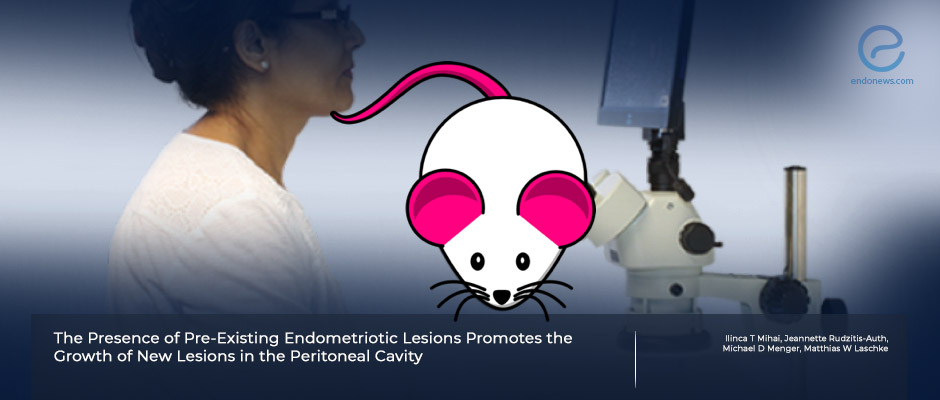Vicious cycle: The promoting role of previous endometriosis foci for new lesions
Oct 13, 2023
Established endometriotic foci facilitate development of new lesions
Key Points
Highlights:
- The peritoneal fluid of endometriosis patients has yielded high concentrations of various inflammatory cytokines and angiogenic growth factors.
Importance:
- Microenvironment changes in endometriosis patients may promote the development of new lesions leading to a possible vicious cycle.
What’s done here:
- Uterine tissue samples from wild-type donor mice simultaneously or time-delayed with samples from transgenic donor mice were transplanted into the abdominal cavity of wild-type recipient mice for the surgical induction of endometriosis.
- The evolution of endometriotic foci was analyzed by means of high-resolution ultrasound, bioluminescence imaging, microscopic sections, and immunostains.
- In addition, immune cells and inflammatory chemicals in the abdominal cavity were assessed by flow cytometry and a cytokine array.
Key results:
- The growth of new endometriotic foci is promoted by the presence of pre-existing endometriosis.
- This is not related to an exchange of cells between both lesion types but rather due to the peritoneal inflammatory milieu induced by the previous endometriotic lesions.
Potential limitations:
- This is an experimental model, and endometriotic lesions are surgically induced, hence the results can not fully correlate to endometriosis patients.
- The number of analyzed mice was kept to a minimum due to ethical reasons. This low number could limit the statistical significance of the obtained results.
Lay Summary
An experimental animal study on the pathogenesis of endometriosis from the Institute for Clinical and Experimental Surgery, Saarland University, Hamburg has been published in a recent issue of International Journal of Molecular Sciences.
Endometriosis is a well-known common gynecological ailment characterized by endometrial tissues located ectopically. Most patients have endometriotic lesions on intraabdominal peritoneal surfaces. The most popular pathogenetic postulation for endometriosis is the retrograde transfer of eutopic endometria through Fallopian tubes into the abdomen and adherence to the peritoneal surfaces during menstruation.
The peritoneal fluid of endometriosis patients has yielded high concentrations of various inflammatory cytokines besides vascular growth factors facilitating the development of new foci.
In this experimental laboratory study, uterine tissue samples from wild-type donor mice simultaneously or time-delayed with samples from transgenic donor mice were transplanted into the abdominal cavity of wild-type recipient mice for the surgical induction of endometriosis.
The evolution of endometriotic foci was analyzed by means of high-resolution ultrasound, bioluminescence imaging, microscopic sections, and immunostains. In addition, immune cells and inflammatory chemicals in the abdominal cavity were assessed by flow cytometry and a cytokine array. Flow cytometry revealed a significantly higher fraction of Gr1-positive granulocytes within the peritoneal fluid 14 days after the induction of endometriotic foci in comparison to baseline conditions. Also, the expression of 40 different cytokines, chemokines, and acute phase proteins in the peritoneal fluid revealed that the expression of most of these factors was increased 14 days after the induction of endometriotic lesions when compared to baseline conditions. Immunostaining within wild-type lesions on day 28 after induction showed a comparable fraction of granulocytes and macrophages in endometriotic foci in both time-delayed transplanted and simultaneously transplanted groups.
This experiment has demonstrated that prior endometriotic lesions promote the growth of new lesions in the peritoneal cavity of mice. This is not due to a relevant cellular exchange but rather mediated by peritoneal inflammation, creating favorable conditions for new lesions. When extrapolated to the clinical situation. This finding may indicate that patients already with peritoneal endometriosis could have a higher risk for the establishment and progression of new lesions like a vicious cycle.
Research Source: https://pubmed.ncbi.nlm.nih.gov/37762161/
experimental endometriosis bioluminescence immune cells inflammation vicious cycle

